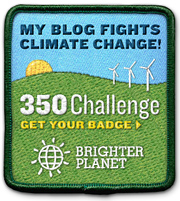 Ecological light pollution (ELP) is caused by excessive or obtrusive artificial light. It occurs especially in urban areas where sources of artificial light abound. It not only reduces the visibility of the night sky but, like any form of pollution, harms the ecosystem and the health of its inhabitants. There are many different types of ELP, light trespassing and sky glow being a few of them. The excessive light can cause damage to human health and psychology. But the artificial light affects the non-human inhabitants of this planet the most. Many, if not all, members of the animal kingdom use light sources as their GPS at the night time. According to the article in Wikipedia, “Life exists with natural patterns of light and dark, so disruption of those patterns influences many aspects of animal behavior. Light pollution can confuse animal navigation, alter competitive interactions, change predator-prey relations, and influence animal physiology.” For example, sea turtle hatchlings use the silhouettes of objects caused by moonlight to move away from the land and the reflections of moonlight from the sea to move towards it. However, as one can easily imagine, artificial sources of light cause major interference in these “guiding mechanisms”.
Ecological light pollution (ELP) is caused by excessive or obtrusive artificial light. It occurs especially in urban areas where sources of artificial light abound. It not only reduces the visibility of the night sky but, like any form of pollution, harms the ecosystem and the health of its inhabitants. There are many different types of ELP, light trespassing and sky glow being a few of them. The excessive light can cause damage to human health and psychology. But the artificial light affects the non-human inhabitants of this planet the most. Many, if not all, members of the animal kingdom use light sources as their GPS at the night time. According to the article in Wikipedia, “Life exists with natural patterns of light and dark, so disruption of those patterns influences many aspects of animal behavior. Light pollution can confuse animal navigation, alter competitive interactions, change predator-prey relations, and influence animal physiology.” For example, sea turtle hatchlings use the silhouettes of objects caused by moonlight to move away from the land and the reflections of moonlight from the sea to move towards it. However, as one can easily imagine, artificial sources of light cause major interference in these “guiding mechanisms”.As if the ELP affecting the ecology at night time wasn’t doing enough harm, researchers have recently found out another form of light pollution that exists at daytime and night. It is called Polarised light pollution (PLP) and as the name suggests, it is caused by existence of artificially polarised light. In the natural world, water is the primary source of horizontal polarised light and many animals - including birds, insects and reptiles - have highly developed polarisation vision. However, in urban environments, any shiny, black object that reflects a polarised light adds to the “cues” for animal behaviour. Glass window panes, asphalt roads, oil are some of the common culprits. The sea creatures use polarisation of light passing through the transparent plankton as a tool to locate their food. However, thin plastic bags in the sea produce a very similar polarised light leading more and more sea turtles to ingest them! A very informative article on the research about PLP and its effects is published on the BBC News’ website. I feel it makes for a very interesting read and shows us one more way in which us humans are messing with the ecology of this planet.


![Reblog this post [with Zemanta]](http://img.zemanta.com/reblog_e.png?x-id=811ae49d-8852-4128-bee9-0c2faf80f26e)

















1 comments:
Wow. We have no Idea of the effects of our actions. The more I read about it the more I am convinced that the sustainable way is the indigenous way. Their culture of living in balance with the environment allows their culture to survive for 10s of thousands of years. Any other "civilisation" destroys itself in few thousand years. At least I did not hear of any that would.
Post a Comment